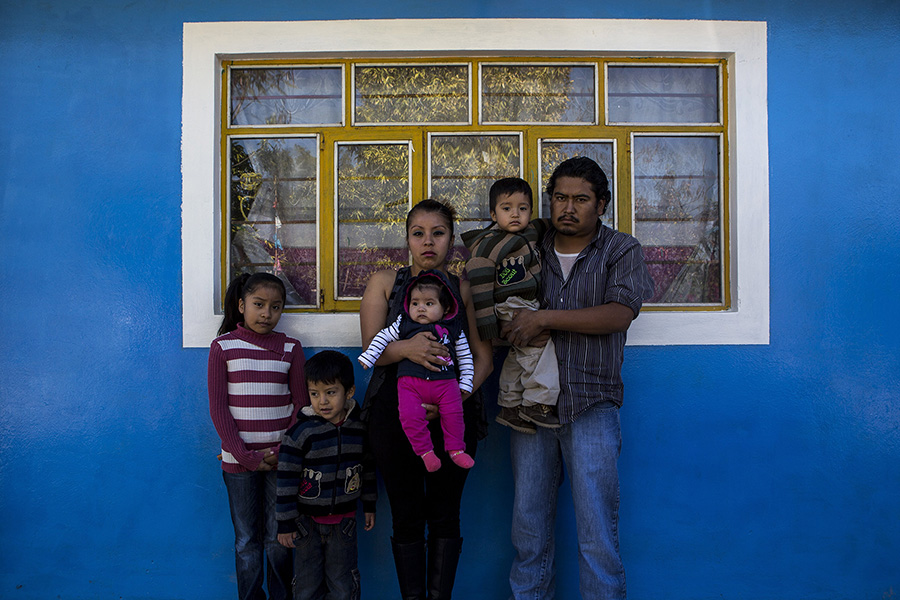How 3 insurtech models work for low-income people

The history of insurance traces back to the 17th century and a small coffee house in London owned by Edward Lloyd. At Lloyd’s coffee house, financiers and shipmen created the first insurance contracts to protect the contents of ships going overseas. Since then, the insurance industry has grown tremendously and now accounts for a US$5 trillion market worldwide. The US Fortune 500 includes over 50 insurance companies and almost all of them (46) have been around for over 100 years.
However, like many financial products and services, insurance—a key mechanism by which humans prepare for risk—has thus far only benefited a few. The latest Lloyd’s report found that the global underinsurance gap—the value of assets at risk not covered fully by insurance policies—is now US$162.5 billion. Of that total protection gap, emerging economies account for a shocking 96%. Insurance is, without a doubt, an industry much in need of disruption in favor of the underserved.
Although there is extensive evidence about how insurance has provided safety nets and created macroeconomic benefits for society, we are still learning what type of insurance models will work for low-income populations. Evidence about what works for these populations is thin because traditional insurance players do not reach them given their distribution models and price points.
However, digital models are providing alternative ways of reaching them at much lower costs. Digital insurance has the advantage of scale-efficiency: serving additional policyholders does not require opening new offices and hiring proportionally more people. These efficiencies create an opportunity for micro-insurance models that have small premiums and smaller, more frequent payouts. The unit economics of such models simply did not work out in a pre-digital age given the costs of approving and administering claims.
Catalyst Fund operates in three of the ten countries with the largest insurance gaps (Nigeria, India, and Mexico) where we are supporting a wave of innovative startups seeking to bring insurance solutions to millions of underserved customers. These startups fall into three models as noted by Alex Lazarow: full-stack insurers (or carriers), brokers, and Managing General Agents (MGAs), which are something in between the first two. Each of these models are distinct with regards to value proposition and ease of set up. They are each leveraging technology to adapt the four core elements of an insurance value proposition: the policy itself, customer acquisition, underwriting, and claims.
In each of the three models, insurance policies are either offered “stand-alone” directly to consumers or “embedded” into other offerings. Embedded finance means including the offer of a financial service product alongside the sale of a non-financial product, for example when a warranty (i.e., insurance) is offered at time of purchase. Embedding insurance with another product solves a fundamental challenge of customer acquisition which, when combined with a digital operating model, revolutionizes the business case for insurance. This blog explores the advantages of each model.
Carriers: End-to-end ownership of the experience
Carriers, or “full-stack” insurtech companies, are fully-licensed insurers; they control the entire process of delivering insurance from beginning to end. They acquire users, underwrite the policies, and manage the eventual claims. This end-to-end control means that carriers have the freedom to design new products based on their understanding of risk and customer needs. However, this freedom also means that carriers are responsible for selecting the risks to insure and the resulting profitability or losses (on most occasions, they share the risk of losses with a reinsurer).
When insurtech companies have this degree of freedom to design bespoke policies, they are well suited to offer policies for targeted segments with specific needs. They can offer lower-cost niche products (such as focusing just on improving health insurance), sold and serviced via channels that can reach underserved populations such as Whatsapp, with a drastically simplified claims management processes. For example, in Mexico, Sofia recently became the country’s first fully digital health insurance carrier. This design power also positions full-stack insurtech companies to offer “embedded insurance” tailored to various products and channels, without dependency on legacy insurance players and generic policies.
Given the systematic and household risks involved, insurance is a highly-regulated sector; the process for obtaining a license is complicated and costly, as capital requirements are designed to reduce the risk of insolvency in the event of a widespread disaster. Companies that want to pursue this strategy often have to resort to large fundraising rounds to meet minimum capital requirements. For instance, Oscar Health has raised over $1.5 billion dollars in ten funding rounds; while Softbank-backed Lemonade recently made their IPO debut with half a billion dollars in private funding.
Even still, the numbers of insurtech companies with full insurer licenses have been rising across the globe. Notable insurtech carriers include: Lemonade, a home and pet insurance operating in the US, Germany, and France; Oscar Health, a US-based digital health insurance; iúnigo, a fully-digital Argentinian car insurance company; Wefox, a renters’ liability, and travel insurance company based out of Germany; and Zhong An, which offers a wide range of non-life insurance products in China.
In emerging markets, this capital-intensive model poses a higher barrier for entry to startups – especially where the venture capital landscape offers limited funding options. Going forward, we hope to see more funding for full-stack insurers that can account for the needs, habits, and preferences of the underserved.
Brokers: Quick and light-footed innovation
Insurance brokers forego flexibility in underwriting and product design in exchange for increased agility and distribution capacity. In this model, insurance brokers are licensed to sell policies on behalf of one or several insurance carriers, serving as a bridge between carriers and customers. Partner carriers manage the risk analysis and regulatory costs, while brokers manage sales and distribution. In some cases when brokers can muster a significant volume of customers, they can partner with carriers to design bespoke policies.
This insurance model is more common because it is considerably easier to set up and faster to scale. Insurance brokers require a fraction of the capital needed by insurance carriers since brokers need not shoulder the costs of regulatory compliance and they usually do not require any minimum capital reserves by regulation.
Given the agility and cost structure of broker models, they are more common in emerging markets. One such insurtech startup is Catalyst Fund portfolio company Turaco, which provides affordable and accessible insurance to underserved users in Kenya and Uganda. In just a few short years, Turaco already reaches over 70,000 gig-economy workers by offering life and health insurance coverage through partnerships with digital ride-hailing platforms. The policies, which can cost as little as ~$2 a month, include hospital cashback benefits and funeral expenses, helping families manage unforeseen shocks. Turaco’s products are created and underwritten by insurance carriers, which partner with Turaco to design the policies and then get them to market.
In Mexico, Catalyst Fund portfolio company Bamba is also a broker, providing access to insurance to a long-overlooked segment: domestic workers. Bamba offers domestic workers a number of financial products and services, including health insurance. Bamba’s strategy to expand financial inclusion and coverage is to leverage a pathway familiar to them: their employers. Similarly, Catalyst Fund portfolio company Wellahealth, in Nigeria, has used their strong relationships with insurance carriers to design products that work for the Nigerian population. They have created a specific malaria policy and developed features that users value, such as telemedicine and hospicash.
Neither Turaco, Bamba, nor Wellahealth is subject to regulatory compliance such as minimum capital requirements. While they have less control over any given product, they can pick and choose from among the available insurance carriers, selecting the offer that meets the needs of their target segment. As they collect users and usage data, the opportunity to work with carriers to develop new types of policies grows, thereby influencing the design of the insurance products to meet users’ needs.
A frequently noted challenge among our portfolio companies – and broker insurtech companies in general – is their dependence on legacy insurance companies and their existing policies. Although not all traditional insurers are the same, they usually work at a slower pace and have internal challenges to digital transformation or adaptations to product, pricing, service levels, and other aspects. As such, they may be slow or unwilling to adapt to underserved people’s needs or to work with insurtech companies that are moving quickly to reach new, low-income target groups.
MGAs: a good compromise?
With more underwriting flexibility than a broker but fewer regulatory requirements than a carrier, managing general agents (MGAs) occupy a middle ground between the two models. MGAs act on behalf of insurance carriers, which grant MGAs some underwriting autonomy in exchange for offloading the underwriting risk to the balance sheet of the insurer. Risk distribution, underwriting authority and profit-sharing agreements are set between MGAs, carriers and re-insurers to determine how much of – and how independently – the business will be managed by the MGA.
For these models to thrive, MGAs must excel at collecting and understanding alternative sets of data because in contrast to brokers, they are heavily involved in the underwriting. That is why MGAs tend to deal in areas of coverage where specialized expertise is needed to underwrite policies.
An MGA example is Bima, an insurance startup originally launched in Ghana that offers a range of affordable life, health, and personal accident coverage in over ten emerging markets. MGAs also include parametric insurance providers like AXA Climate and Descartes Underwriting, which use satellite and other agricultural data to understand the amount of rain (and loss of harvest) in specific communities. At the end of the rainy season, such startups pay out claims in communities where rainfall was below the threshold. Simple “we pay you if it doesn’t rain” models are easily understood by farmers and can increase insurance penetration among the people who need it the most, making decisions on a data-driven basis, from trust and sales to underwriting.
The MGA model can be a “sweet spot” in terms of speed, autonomy and capital burden. It comes, however, with its own challenges. For example, the startup needs to build internal underwriting expertise, but in the end, the carrier can still call the shots, since they are, from a regulatory point of view, holding the risk and are therefore the responsible entity. The model is also heavily dependent on local regulation; in Mexico, for example, MGA models are basically non-existent due to the local regulatory framework. Finally, MGA models, especially parametric ones, are still dependent on building policies and partnerships with legacy insurers, who may be slow to adjust pricing and design to users’ needs.
Which model works best to reach underserved and low-income customers?
In the end, there is no right answer to which model is best suited to underserved people as there are successful examples of all three models. At most, we can conclude that the insurance model a startup chooses should depend on their product category, market maturity, and the regulatory environment.
For startups working in established product categories (such as life or health insurance) and with the opportunity to leverage new distribution channels or customer engagement models, a broker model might work well to start. However, in product categories that require new data to gain an underwriting advantage, an MGA might be the best model since it saves the expensive minimum capital requirements. Lastly, in markets with strong capital and talent (underwriting, legal, regulatory, and investments), and where the underwriting model or customer experience could benefit from a full redesign, a carrier model might be the most attractive solution to benefit the end-user.
Regardless of the insurance model, embedded or not, one thing is certain: there is no going alone. When it comes to expanding insurance penetration in underserved markets, partnerships are key. Bima, for example, has partnered with Allianz while MSI is partnering with Hanover RE. In South Africa, MobiLife secured a distribution partnership with the largest bank in South Africa and in Mexico, Mango Life has developed their own plug-and-play insurance solution to allow digital banks to embed insurance in their offering.
We look forward to supporting more innovative insurtech startups that are finding ways of bridging the insurance gap in emerging markets. Our newest cohort of companies includes Power, and Lami, which are pioneering a new approach to advancing insurance penetration in emerging markets through API-based solutions and fully-digital distribution models. Lami is also enabling businesses across sectors – from banks to tech platforms – to easily offer their users a variety of tailored and embedded insurance products. Stay tuned for more of our learnings on embedded insurtech.


